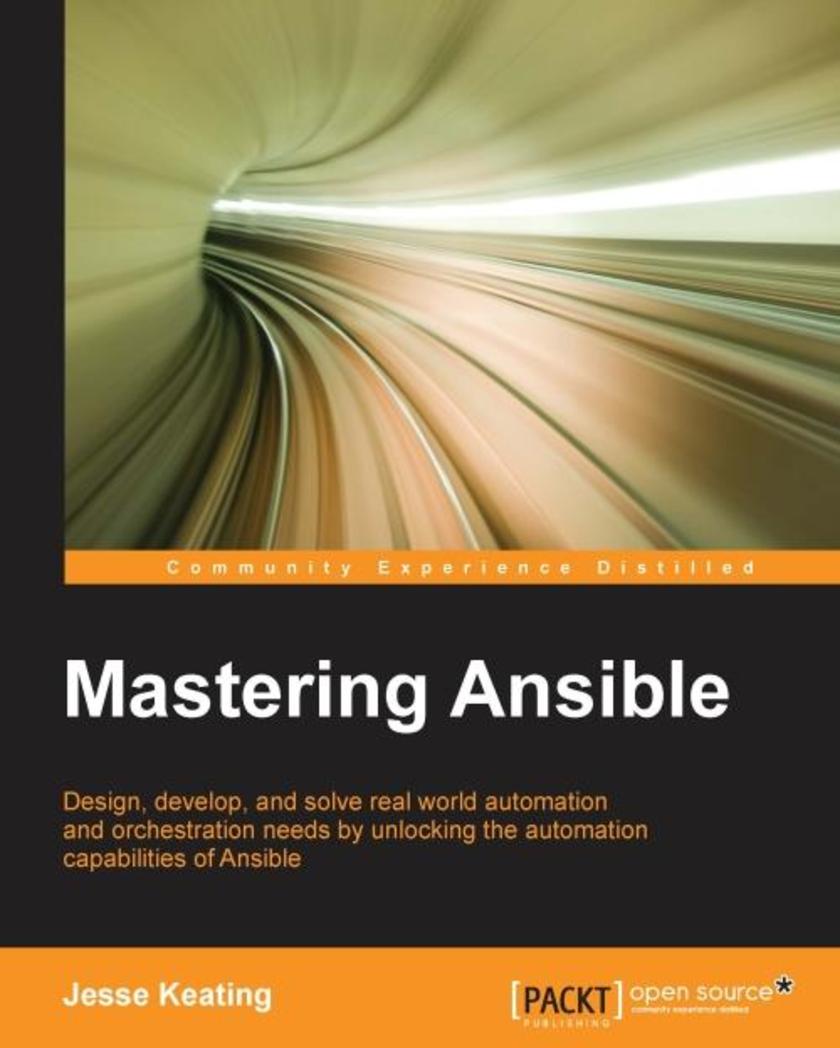
Mastering Ansible
¥71.93
Design, develop, and solve real world automation and orchestration needs by unlocking the automation capabilities of Ansible About This Book Discover how Ansible works in detail Explore use cases for Ansible’s advanced features including task delegation, fast failures, and serial task execution Extend Ansible with custom modules, plugins, and inventory sources Who This Book Is For This book is intended for Ansible developers and operators who have an understanding of the core elements and applications but are now looking to enhance their skills in applying automation using Ansible. What You Will Learn Understand Ansible’s code and logic flow Safeguard sensitive data within Ansible Access and manipulate complex variable data within Ansible playbooks Handle task results to manipulate change and failure definitions Organize Ansible content into a simple structure Craft a multi-tier rollout playbook utilizing load balancers and manipulating your monitoring system Utilize advanced Ansible features to orchestrate rolling updates with almost no service disruptions Troubleshoot Ansible failures to understand and resolve issues Extend Ansible with custom modules, plugins, or inventory sources In Detail Automation is critical to success in the world of DevOps. How quickly and efficiently an application deployment can be automated, or a new infrastructure can be built up, can be the difference between a successful product or a failure. Ansible provides a simple yet powerful automation engine. Beyond the basics of Ansible lie a host of advanced features which are available to help you increase efficiency and accomplish complex orchestrations with ease. This book provides you with the knowledge you need to understand how Ansible works at a fundamental level and leverage its advanced capabilities. You'll learn how to encrypt Ansible content at rest and decrypt data at runtime. You will master the advanced features and capabilities required to tackle the complex automation challenges of today and beyond. You will gain detailed knowledge of Ansible workflows, explore use cases for advanced features, craft well thought out orchestrations, troubleshoot unexpected behaviour, and extend Ansible through customizations. Finally, you will discover the methods used to examine and debug Ansible operations, helping you to understand and resolve issues. Style and approach A clear, practical guide that covers best practise, system architecture and design aspects that will help you master Ansible with ease.
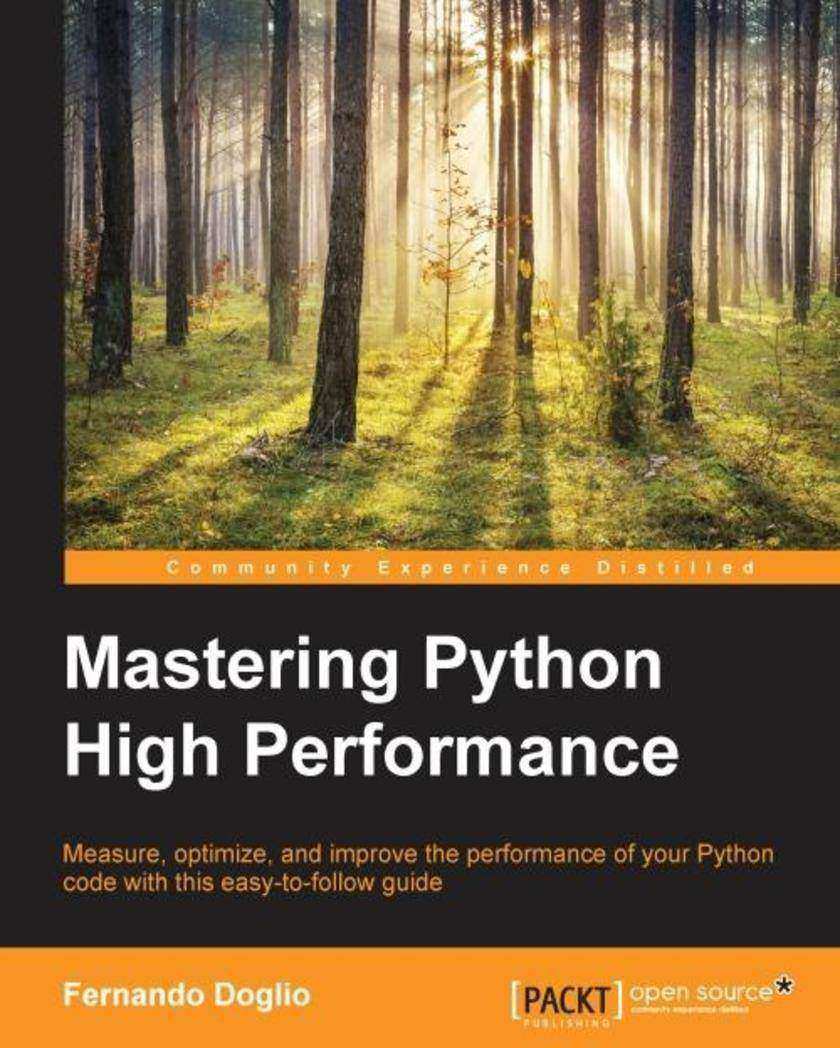
Mastering Python High Performance
¥71.93
Measure, optimize, and improve the performance of your Python code with this easy-to-follow guide About This Book Master the do's and don'ts of Python performance programming Learn how to use exiting new tools that will help you improve your *s A step-by-step, conceptual guide to teach you how to optimize and fine-tune your critical pieces of code Who This Book Is For If you're a Python developer looking to improve the speed of your *s or simply wanting to take your skills to the next level, then this book is perfect for you. What You Will Learn Master code optimization step-by-step and learn how to use different tools Understand what a profiler is and how to read its output Interpret visual output from profiling tools and improve the performance of your * Use Cython to create fast applications using Python and C Take advantage of PyPy to improve performance of Python code Optimize number-crunching code with NumPy, Numba, Parakeet, and Pandas In Detail Simply knowing how to code is not enough; on mission-critical pieces of code, every bit of memory and every CPU cycle counts, and knowing how to squish every bit of processing power out of your code is a crucial and sought-after skill. Nowadays, Python is used for many scientific projects, and sometimes the calculations done in those projects require some serious fine-tuning. Profilers are tools designed to help you measure the performance of your code and help you during the optimization process, so knowing how to use them and read their output is very handy. This book starts from the basics and progressively moves on to more advanced topics. You’ll learn everything from profiling all the way up to writing a real-life application and applying a full set of tools designed to improve it in different ways. In the middle, you’ll stop to learn about the major profilers used in Python and about some graphic tools to help you make sense of their output. You’ll then move from generic optimization techniques onto Python-specific ones, going over the main constructs of the language that will help you improve your speed without much of a change. Finally, the book covers some number-crunching-specific libraries and how to use them properly to get the best speed out of them. After reading this book, you will know how to take any Python code, profile it, find out where the bottlenecks are, and apply different techniques to remove them. Style and approach This easy-to-follow, practical guide will help you enhance your optimization skills by improving real-world code.
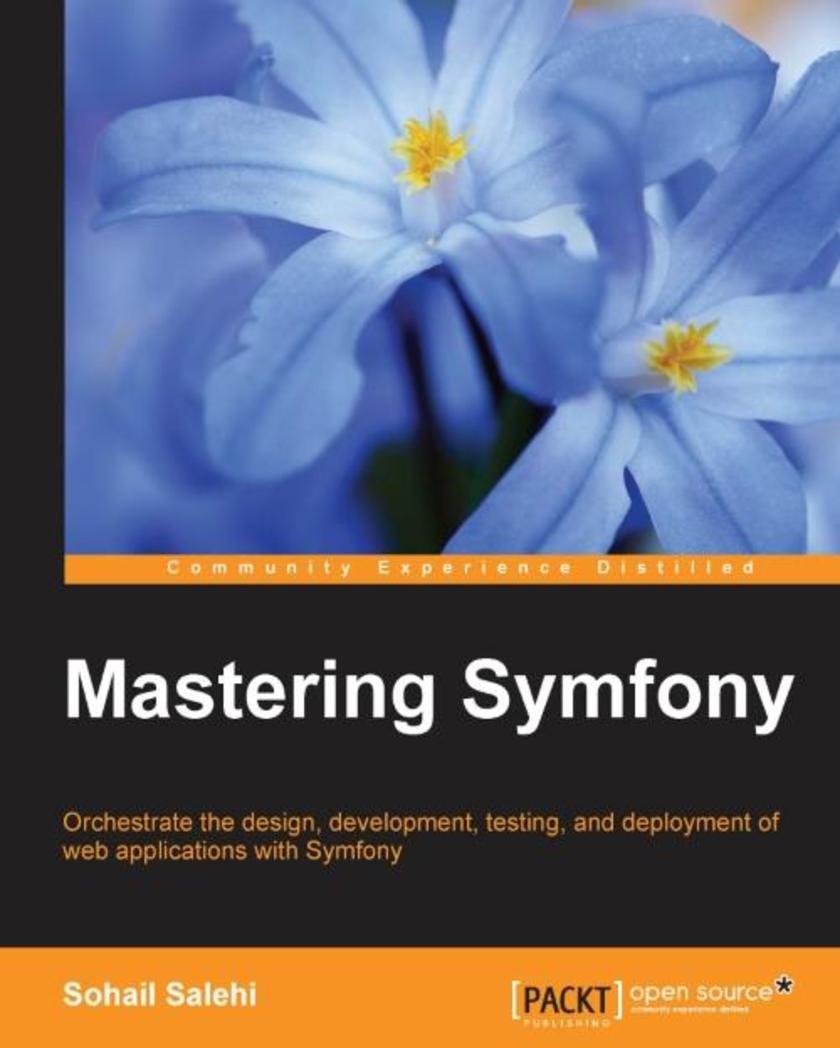
Mastering Symfony
¥71.93
Orchestrate the designing, development, testing, and deployment of web applications with Symfony About This Book Create a robust and reliable Symfony development pipeline using Amazon's cloud platform Cut development and maintenance costs by defining crystal clear features and possible scenarios for each feature before implementation Follow detailed examples provided in each chapter to create a task management application Who This Book Is For If you are a PHP developer with some experience in Symfony and are looking to master the framework and use it to its full potential, then this book is for you. Though experience with PHP, object-oriented techniques, and Symfony basics is assumed, this book will give you a crash course on the basics and then proceed to more advanced topics. What You Will Learn Install and configure Symfony and required third-party bundles to develop a task management application Set up a continuous integration server to orchestrate automatic builds every time you add a new feature to your project Reduce maintenance costs dramatically using Behaviour Driven Development (BDD) Create a slick user interface using the Bootstrap framework Design robust business logic using Doctrine Build a comprehensive dashboard and secure your project using the Sonata project Improve performance using Redis, Memcache, and Varnish Create customized Symfony commands and add them to your console In Detail In this book, you will learn some lesser known aspects of development with Symfony, and you will see how to use Symfony as a framework to create reliable and effective applications. You might have developed some impressive PHP libraries in other projects, but what is the point when your library is tied to one particular projectWith Symfony, you can turn your code into a service and reuse it in other projects. This book starts with Symfony concepts such as bundles, routing, twig, doctrine, and more, taking you through the request/response life cycle. You will then proceed to set up development, test, and deployment environments in AWS. Then you will create reliable projects using Behat and Mink, and design business logic, cover authentication, and authorization steps in a security checking process. You will be walked through concepts such as DependencyInjection, service containers, and services, and go through steps to create customized commands for Symfony's console. Finally, the book covers performance optimization and the use of Varnish and Memcached in our project, and you are treated with the creation of database agnostic bundles and best practices. Style and approach A step-by-step guide to mastering Symfony while developing a task management application. Each chapter comes with detailed examples.
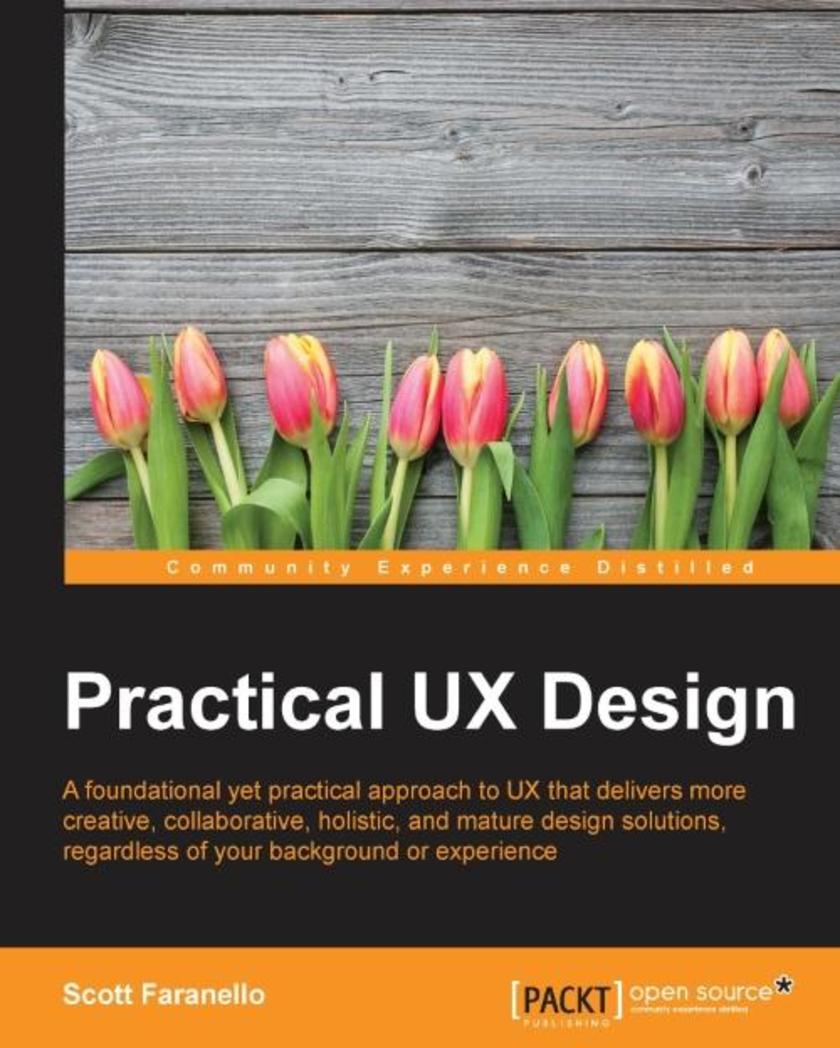
Practical UX Design
¥71.93
A foundational yet practical approach to UX that delivers more creative, collaborative, holistic, and mature design solutions, regardless of your background or experience About This Book Improve your UX design awareness and skills Gain greater confidence to know when you have delivered a “good” UX design Learn by example using a book designed by a UX mind for a UX mind Who This Book Is For This book is written for the beginner as well as the experienced UX practitioner, regardless of team size, company size, or job title. It is also intended for anyone with an interest in UX, engages with UX, is involved in any way in interactive problem solving and design, or simply wants to learn more about what we do, how we do it, and why those in the UX field are so passionate about wanting to do it better. What You Will Learn Awaken your UX mind and dispel the myths of non-UX thinkers Create the six optimal conditions for your best ideas to appear Identify and incorporate the ten design principles found in all good UX design Develop a broader understanding of Information Architecture (IA) to better engage, guide, and inform Develop a fundamental understanding of patterns and the properties that create them Raise your level of UX maturity with a strategy that transforms your approach to problem solving and helps others understand the true value of your work Utilize important tools of the UX trade that never go out of style Increase your knowledge of UX, incorporate valuable ideas and insights into your work, and look at design from a very unique perspective In Detail Written in an easy-to-read style, this book provides real-world examples, a historical perspective, and a holistic approach to design that will ground you in the fundamental essentials of interactive design, allow you to make more informed design decisions, and increase your understanding of UX in order to reach the highest levels of UX maturity. As you will see, UX is more than just delighting customers and users. It is also about thinking like a UX practitioner, making time for creativity, recognizing good design when you see it, understanding Information Architecture as more than just organizing and labeling websites, using design patterns to influence user behavior and decision making, approaching UX from a business perspective, transforming your client’s and company’s fundamental understanding of UX and its true value, and so much more. This book is an invaluable resource of knowledge, perspective, and inspiration for those seeking to become better UX designers, increase their confidence, become more mature design leaders, and deliver solutions that provide measurable value to stakeholders, customers, and users regardless of project type, size, and delivery method. Style and approach An in-depth, easy to read, and entertaining journey into and through the world of UX using real-world examples, thoughtful illustrations, and engaging quotes to inspire and explain fully the how and why of UX in a practical and impactful way and used immediately in your own work.
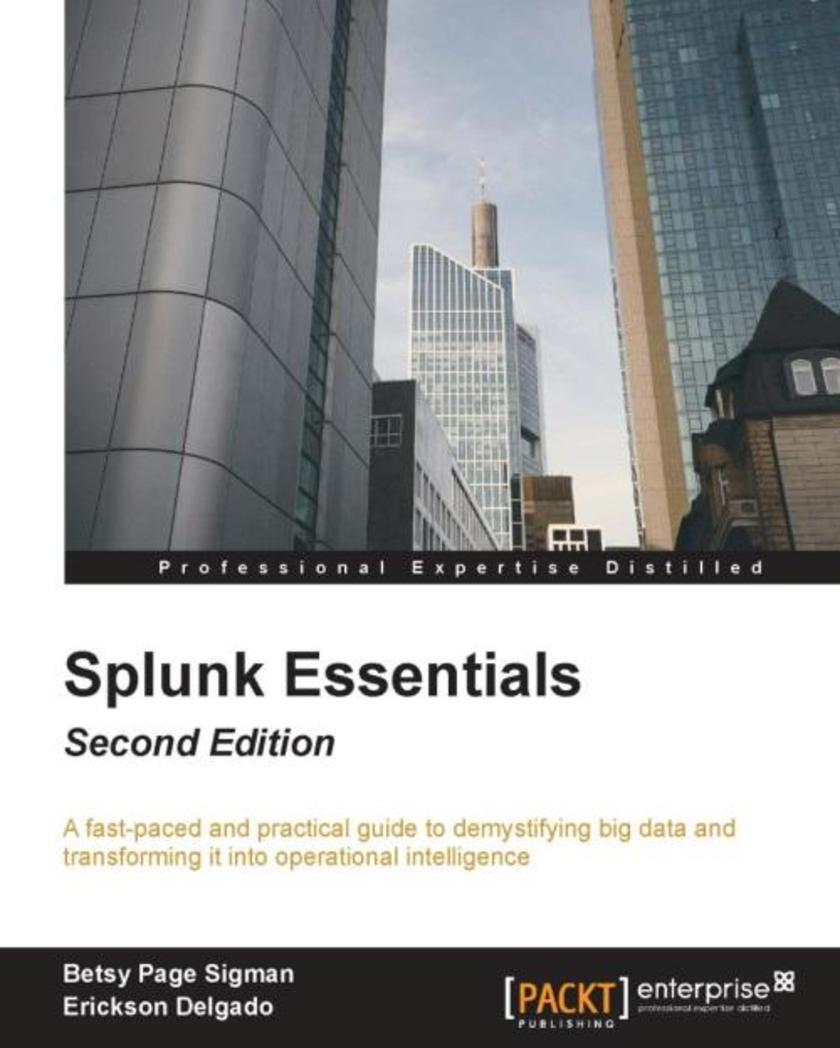
Splunk Essentials - Second Edition
¥71.93
A fast-paced and practical guide to demystifying big data and transforming it into operational intelligence About This Book Want to get started with Splunk to analyze and visualize machine dataOpen this book and step into the world of Splunk. Leverage the exceptional analysis and visualization capabilities to make informed decisions for your business This easy-to-follow, practical book can be used by anyone, even if you have never managed any data before Who This Book Is For This book will be perfect for you if you are a Software engineer or developer or System administrators or Business analyst who seek to correlate machine data with business metrics and provide intuitive real-time and statistical visualizations. Some knowledge or experience of previous versions of Splunk will be helpful but not essential. What You Will Learn Install and configure Splunk Gather data from different sources, isolate them by indexes, classify them into source types, and tag them with the essential fields Be comfortable with the Search Processing Language and get to know the best practices in writing search queries Create stunning and powerful dashboards Be proactive by implementing alerts and scheduled reports Use the Splunk SDK and integrate Splunk data into other applications Implement the best practices in using Splunk. In Detail Splunk is a search, analysis, and reporting platform for machine data, which has a high adoption on the market. More and more organizations want to adopt Splunk to use their data to make informed decisions. This book is for anyone who wants to manage data with Splunk. You’ll start with very basics of Splunk— installing Splunk—and then move on to searching machine data with Splunk. You will gather data from different sources, isolate them by indexes, classify them into source types, and tag them with the essential fields. After this, you will learn to create various reports, XML forms, and alerts. You will then continue using the Pivot Model to transform the data models into visualization. You will also explore visualization with D3 in Splunk. Finally you’ll be provided with some real-world best practices in using Splunk. Style and approach This fast-paced, example-rich guide will help you analyze and visualize machine data with Splunk through simple, practical instructions.
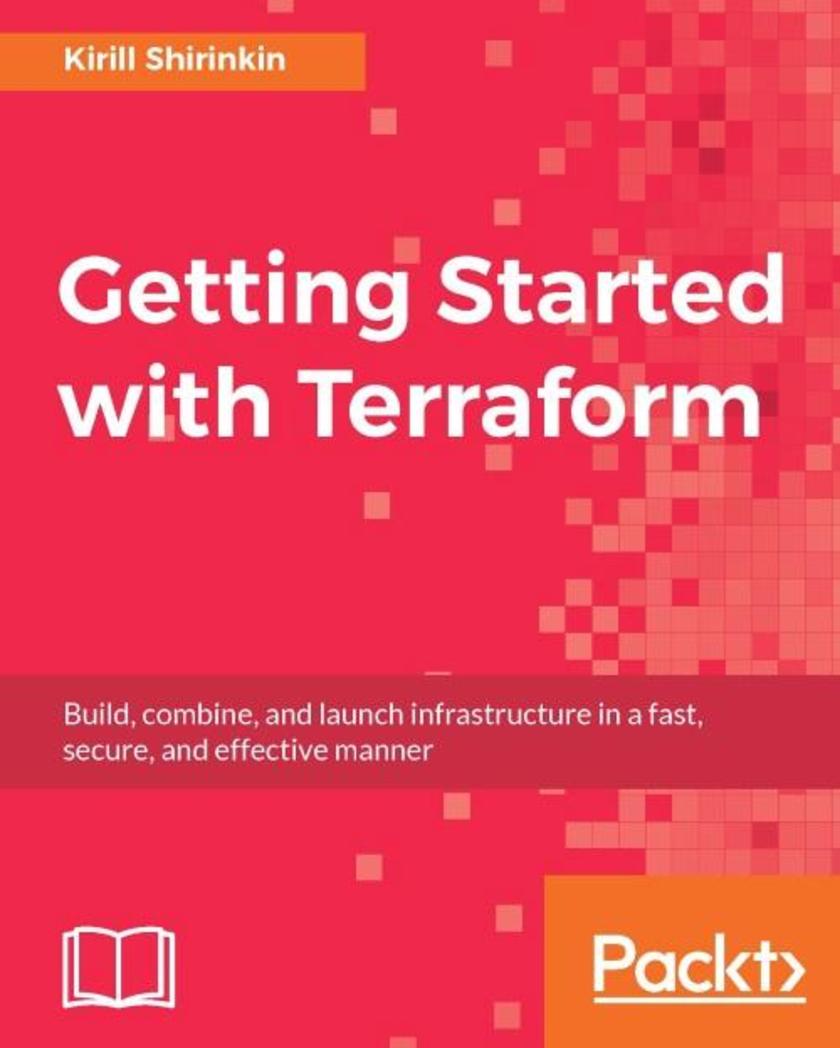
Getting Started with Terraform
¥71.93
Build, combine, and launch infrastructure in a fast, secure, and effective manner About This Book An up-to-date and comprehensive resource on Terraform that lets you quickly and efficiently launch your infrastructure Learn how to implement your infrastructure as code and make secure, effective changes to your infrastructure Learn to build multi-cloud fault-tolerant systems and simplify the management and orchestration of even the largest scale and most complex cloud infrastructures Who This Book Is For This book is for developers and operators who already have some exposure to working with infrastructure but want to improve their workflow and introduce infrastructure as a code practice. Knowledge of essential Amazon Web Services components (EC2, VPC, IAM) would help contextualize the examples provided. Basic understanding of Jenkins and Shell *s will be helpful for the chapters on the production usage of Terraform. What You Will Learn Understand what Infrastructure as Code (IaC) means and why it matters Install, configure, and deploy Terraform Take full control of your infrastructure in the form of code Manage complete complete infrastructure, starting with a single server and scaling beyond any limits Discover a great set of production-ready practices to manage infrastructure Set up CI/CD pipelines to test and deliver Terraform stacks Construct templates to simplify more complex provisioning tasks In Detail Terraform is a tool used to efficiently build, configure, and improve production infrastructure. It can manage existing infrastructure as well as create custom in-house solutions. This book shows you when and how to implement infrastructure as a code practices with Terraform. It covers everything necessary to set up complete management of infrastructure with Terraform, starting with the basics of using providers and resources. This book is a comprehensive guide that begins with very small infrastructure templates and takes you all the way to managing complex systems, all using concrete examples that evolve over the course of the book. It finishes with the complete workflow of managing a production infrastructure as code – this is achieved with the help of version control and continuous integration. At the end of this book, you will be familiar with advanced techniques such as multi-provider support and multiple remote modules. Style and approach This book focuses on providing the practical skills required to make full use of Terraform. It will take the readers slowly from very small infrastructure templates to the managing complex systems, all by using concrete examples, evolving over the course of the book.
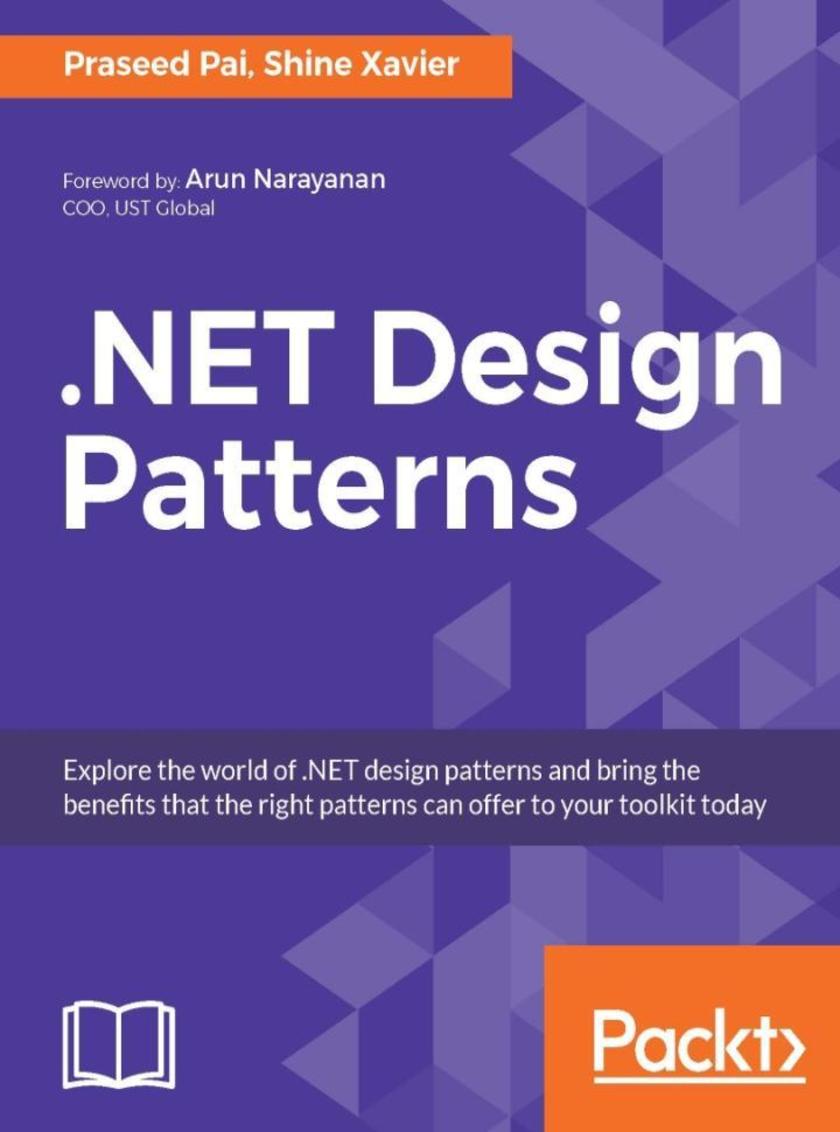
.NET Design Patterns
¥71.93
Explore the world of .NET design patterns and bring the benefits that the right patterns can offer to your toolkit today About This Book This book is based on the latest version of .NET, .NET Core 1.0.·The code is explained piece by piece and the application of the pattern is also showcased. This fast-paced guide shows you how to implement the patterns into your existing applications Who This Book Is For This book is for those with familiarity with .NET development who would like to take their skills to the next level and be in the driver's seat when it comes to modern development techniques. Basic object-oriented C# programming experience and an elementary familiarity with the .NET framework library is required. What You Will Learn Put patterns and pattern catalogs into the right perspective Apply patterns for software development under C#/.NET Use GoF and other patterns in real-life development scenarios Be able to enrich your design vocabulary and well articulate your design thoughts Leverage object/functional programming by mixing OOP and FP Understand the reactive programming model using Rx and RxJs Writing compositional code using C# LINQ constructs Be able to implement concurrent/parallel programming techniques using idioms under .NET Avoiding pitfalls when creating compositional, readable, and maintainable code using imperative, functional, and reactive code. In Detail Knowing about design patterns enables developers to improve their code base, promoting code reuse and making their design more robust. This book focuses on the practical aspects of programming in .NET. You will learn about some of the relevant design patterns (and their application) that are most widely used. We start with classic object-oriented programming (OOP) techniques, evaluate parallel programming and concurrency models, enhance implementations by mixing OOP and functional programming, and finally to the reactive programming model where functional programming and OOP are used in synergy to write better code. Throughout this book, we'll show you how to deal with architecture/design techniques, GoF patterns, relevant patterns from other catalogs, functional programming, and reactive programming techniques. After reading this book, you will be able to convincingly leverage these design patterns (factory pattern, builder pattern, prototype pattern, adapter pattern, facade pattern, decorator pattern, observer pattern and so on) for your programs. You will also be able to write fluid functional code in .NET that would leverage concurrency and parallelism! Style and approach This tutorial-based book takes a step-by-step approach. It covers the major patterns and explains them in a detailed manned along with code examples.
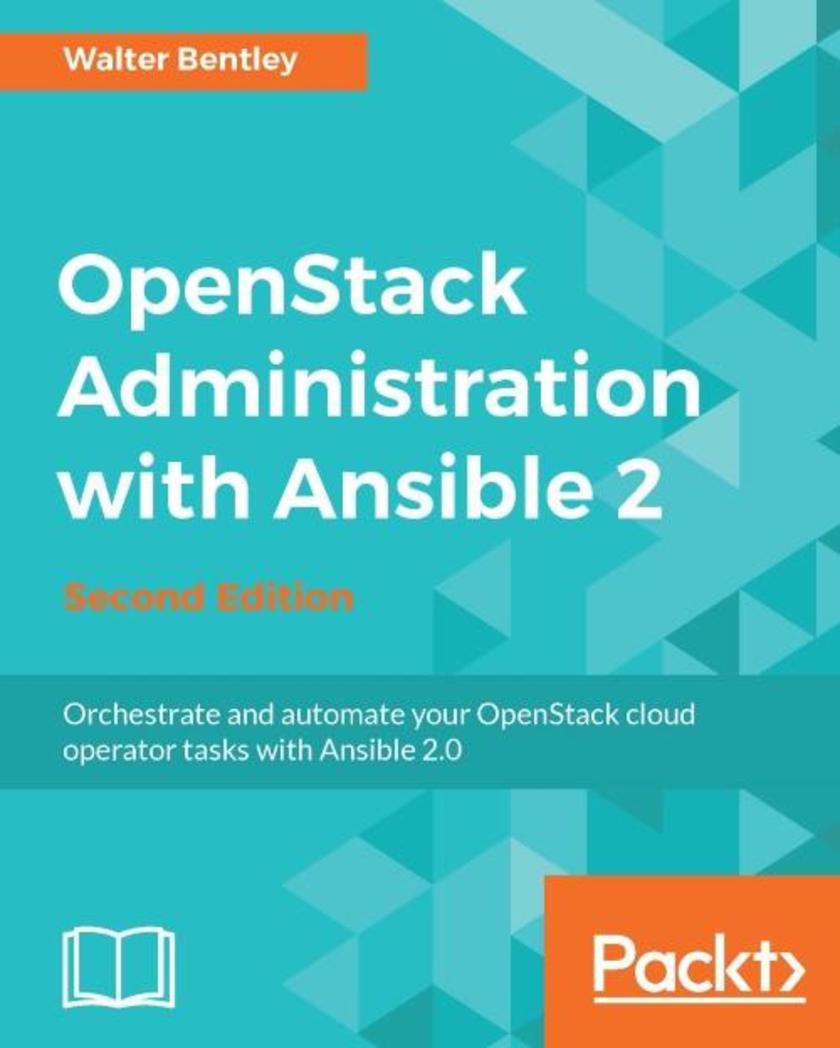
OpenStack Administration with Ansible 2 - Second Edition
¥71.93
Orchestrate and automate your OpenStack cloud operator tasks with Ansible 2.0 About This Book Automate real-world OpenStack cloud operator administrative tasks Construct a collection of the latest automation code to save time on managing your OpenStack cloud Manage containers on your cloud and check the health of your cloud using Nagios Who This Book Is For This book is aimed at OpenStack-based cloud operators and infrastructure and sys administrators who have some knowledge of OpenStack and are seeking to automate taxing and manual tasks. This book is also for people new to automating cloud operations in general and the DevOps practice in particular. What You Will Learn Efficiently execute OpenStack administrative tasks Familiarize yourself with how Ansible 2 works and assess the defined best practices Create Ansible 2 playbooks and roles Automate tasks to customize your OpenStack cloud Review OpenStack automation considerations when automating administrative tasks Examine and automate advanced OpenStack tasks and designated use cases Get a high-level overview of OpenStack and current production-ready projects Explore OpenStack CLI tools and learn how to use them In Detail Most organizations are seeking methods to improve business agility because they have realized just having a cloud is not enough. Being able to improve application deployments, reduce infrastructure downtime, and eliminate daily manual tasks can only be accomplished through some sort of automation. We start with a brief overview of OpenStack and Ansible 2 and highlight some best practices. Each chapter will provide an introduction to handling various Cloud Operator administration tasks such as managing containers within your cloud; setting up/utilizing open source packages for monitoring; creating multiple users/tenants; taking instance snapshots; and customizing your cloud to run multiple active regions. Each chapter will also supply a step-by-step tutorial on how to automate these tasks with Ansible 2. Packed with real-world OpenStack administrative tasks, this book will walk you through working examples and explain how these tasks can be automated using one of the most popular open source automation tools on the market today. Style and approach This book is a concise, fast-paced guide filled with real-world scenarios that will execute OpenStack administrative tasks efficiently. It serves as a quick reference guide for not just OpenStack functions, but also for creating future Ansible code.
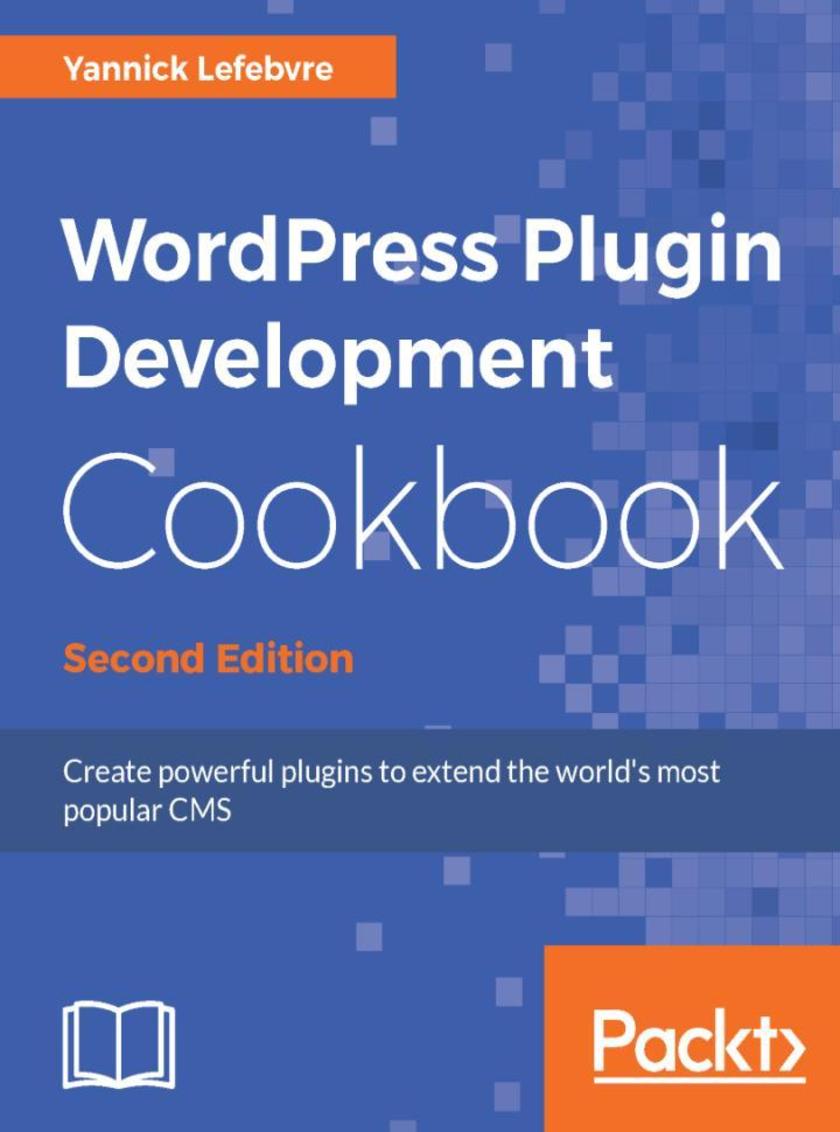
WordPress Plugin Development Cookbook - Second Edition
¥71.93
Learn to create plugins for WordPress 4.x to deliver custom projects or share with the community through detailed step-by-step recipes and code examples About This Book ? Learn how to change and extend WordPress to perform virtually any task ? Explore the plugin API through approachable examples and detailed explanations ? Mold WordPress to your project’s needs or transform it to benefit the entire community Who This Book Is For If you are a WordPress user, developer, or a site integrator with basic knowledge of PHP and an interest to create new plugins to address your personal needs, client needs, or share with the community, then this book is for you. What You Will Learn ? Discover how to register user callbacks with WordPress, forming the basis of plugin creation ? Explore the creation of administration pages and adding new content management sections through custom post types and custom database tables ? Improve your plugins by customizing the post and page editors, categories and user profiles, and creating visitor-facing forms ? Make your pages dynamic using Java*, AJAX and adding new widgets to the platform ? Learn how to add support for plugin translation and distribute your work to the WordPress community In Detail WordPress is a popular, powerful, and open Content Management System. Learning how to extend its capabilities allows you to unleash its full potential, whether you're an administrator trying to find the right extension, a developer with a great idea to enhance the platform for the community, or a website developer working to fulfill a client's needs. This book shows readers how to navigate WordPress' vast set of API functions to create high-quality plugins with easy-to-configure administration interfaces. With new recipes and materials updated for the latest versions of WordPress 4.x, this second edition teaches you how to create plugins of varying complexity ranging from a few lines of code to complex extensions that provide intricate new capabilities. You'll start by using the basic mechanisms provided in WordPress to create plugins and execute custom user code. You will then see how to design administration panels, enhance the post editor with custom fields, store custom data, and modify site behavior based on the value of custom fields. You'll safely incorporate dynamic elements on web pages using *ing languages, and build new widgets that users will be able to add to WordPress sidebars and widget areas. By the end of this book, you will be able to create WordPress plugins to perform any task you can imagine. Style and approach This cookbook will take you through the creation of your first simple plugin to adding entirely new sections and widgets in the administration interface, so you can learn how to change and extend WordPress to perform virtually any task. Each topic is illustrated through realistic examples showing how to solve common problems, followed by detailed explanations of all concepts used
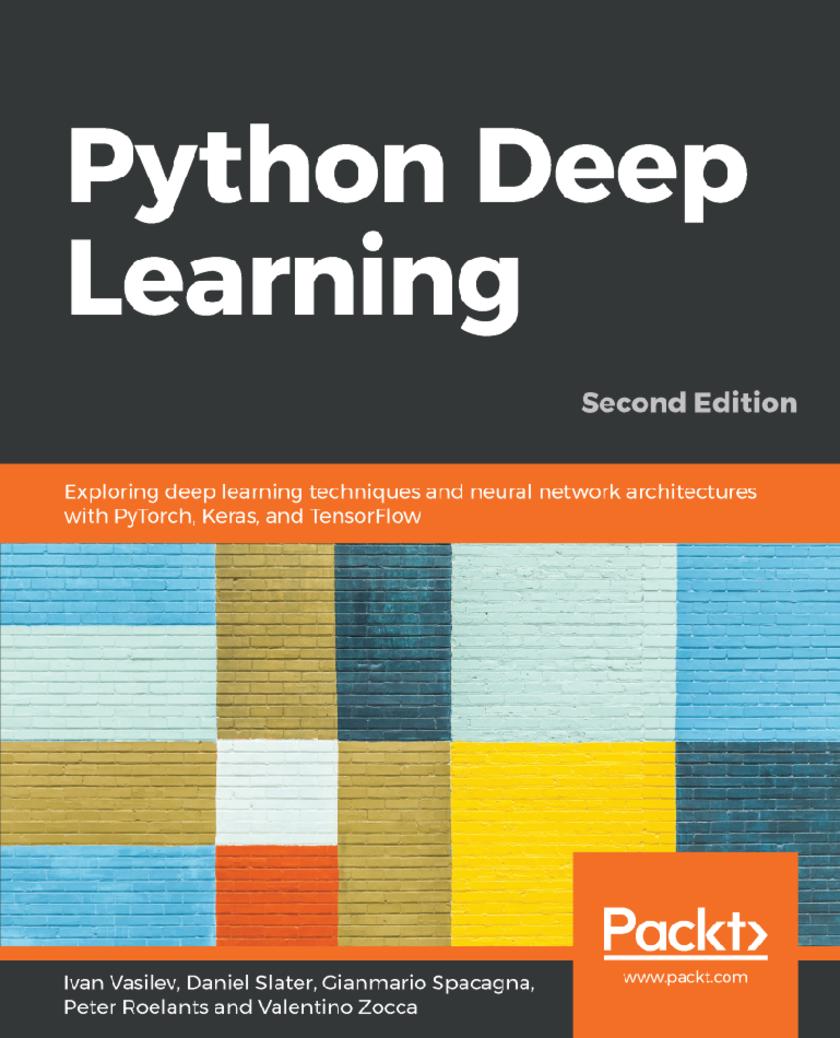
Python Deep Learning
¥71.93
Learn advanced state-of-the-art deep learning techniques and their applications using popular Python libraries Key Features *Build a strong foundation in neural networks and deep learning with Python libraries *Explore advanced deep learning techniques and their applications across computer vision and NLP *Learn how a computer can navigate in complex environments with reinforcement learning Book Description With the surge in artificial intelligence in applications catering to both business and consumer needs, deep learning is more important than ever for meeting current and future market demands. With this book, you’ll explore deep learning, and learn how to put machine learning to use in your projects. This second edition of Python Deep Learning will get you up to speed with deep learning, deep neural networks, and how to train them with high-performance algorithms and popular Python frameworks. You’ll uncover different neural network architectures, such as convolutional networks, recurrent neural networks, long short-term memory (LSTM) networks, and capsule networks. You’ll also learn how to solve problems in the fields of computer vision, natural language processing (NLP), and speech recognition. You'll study generative model approaches such as variational autoencoders and Generative Adversarial Networks (GANs) to generate images. As you delve into newly evolved areas of reinforcement learning, you’ll gain an understanding of state-of-the-art algorithms that are the main components behind popular games Go, Atari, and Dota. By the end of the book, you will be well-versed with the theory of deep learning along with its real-world applications. What you will learn *Grasp the mathematical theory behind neural networks and deep learning processes *Investigate and resolve computer vision challenges using convolutional networks and capsule networks *Solve generative tasks using variational autoencoders and Generative Adversarial Networks *Implement complex NLP tasks using recurrent networks (LSTM and GRU) and attention models *Explore reinforcement learning and understand how agents behave in a complex environment *Get up to date with applications of deep learning in autonomous vehicles Who this book is for This book is for data science practitioners, machine learning engineers, and those interested in deep learning who have a basic foundation in machine learning and some Python programming experience. A background in mathematics and conceptual understanding of calculus and statistics will help you gain maximum benefit from this book.
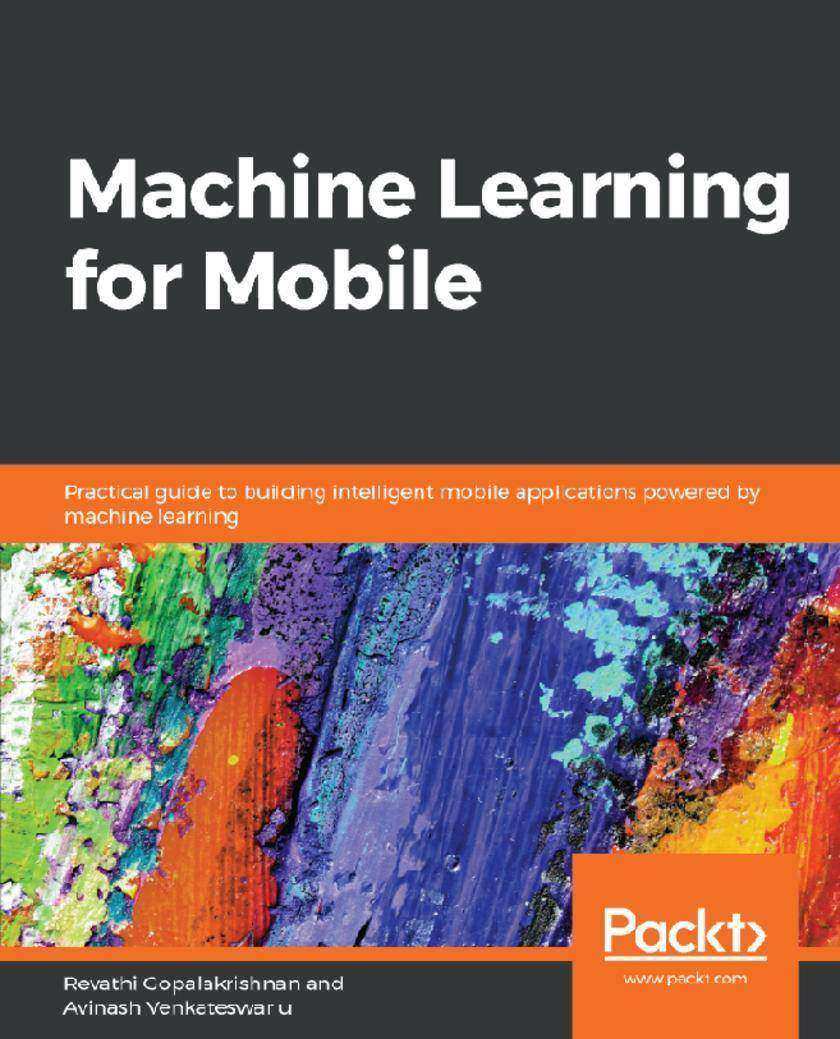
Machine Learning for Mobile
¥71.93
Leverage the power of machine learning on mobiles and build intelligent mobile applications with ease Key Features *Build smart mobile applications for Android and iOS devices *Use popular machine learning toolkits such as Core ML and TensorFlow Lite *Explore cloud services for machine learning that can be used in mobile apps Book Description Machine learning presents an entirely unique opportunity in software development. It allows smartphones to produce an enormous amount of useful data that can be mined, analyzed, and used to make predictions. This book will help you master machine learning for mobile devices with easy-to-follow, practical examples. You will begin with an introduction to machine learning on mobiles and grasp the fundamentals so you become well-acquainted with the subject. You will master supervised and unsupervised learning algorithms, and then learn how to build a machine learning model using mobile-based libraries such as Core ML, TensorFlow Lite, ML Kit, and Fritz on Android and iOS platforms. In doing so, you will also tackle some common and not-so-common machine learning problems with regard to Computer Vision and other real-world domains. By the end of this book, you will have explored machine learning in depth and implemented on-device machine learning with ease, thereby gaining a thorough understanding of how to run, create, and build real-time machine-learning applications on your mobile devices. What you will learn *Build intelligent machine learning models that run on Android and iOS *Use machine learning toolkits such as Core ML, TensorFlow Lite, and more *Learn how to use Google Mobile Vision in your mobile apps *Build a spam message detection system using Linear SVM *Using Core ML to implement a regression model for iOS devices *Build image classification systems using TensorFlow Lite and Core ML Who this book is for If you are a mobile app developer or a machine learning enthusiast keen to use machine learning to build smart mobile applications, this book is for you. Some experience with mobile application development is all you need to get started with this book. Prior experience with machine learning will be an added bonus
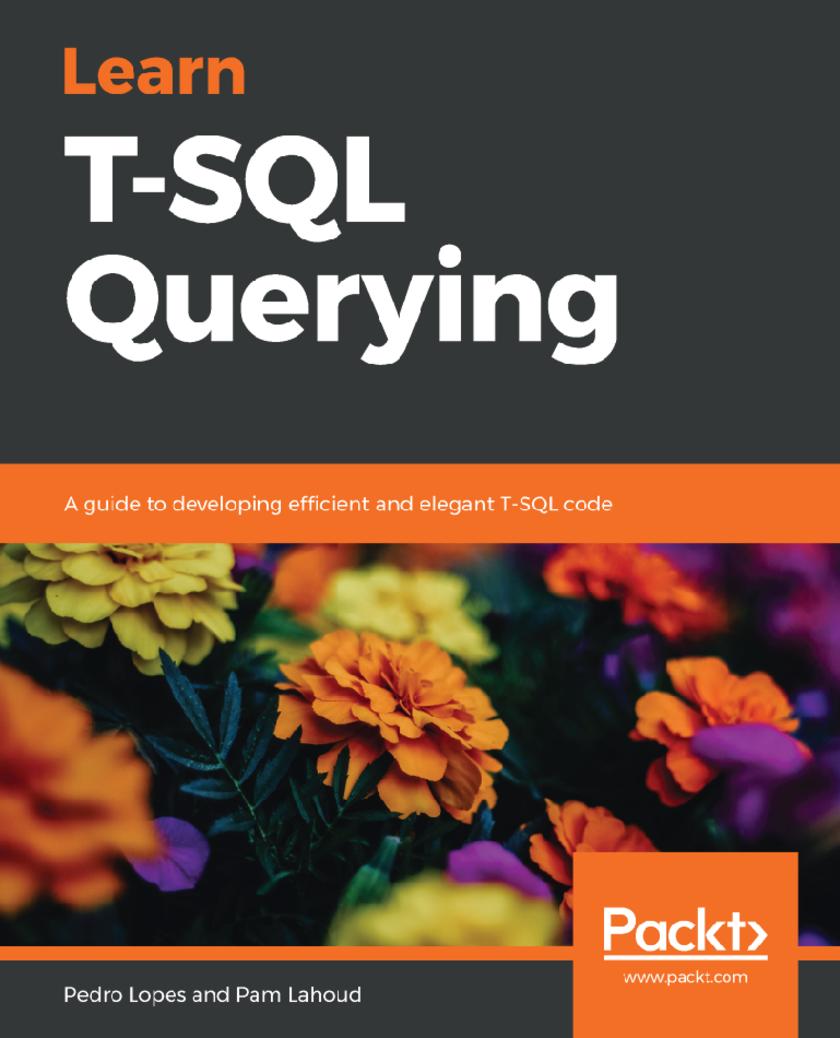
Learn T-SQL Querying
¥70.84
Troubleshoot query performance issues, identify anti-patterns in code, and write efficient T-SQL queries Key Features * Discover T-SQL functionalities and services that help you interact with relational databases * Understand the roles, tasks and responsibilities of a T-SQL developer * Explore solutions for carrying out database querying tasks, database administration, and troubleshooting Book Description Transact-SQL (T-SQL) is Microsoft's proprietary extension to the SQL language that is used with Microsoft SQL Server and Azure SQL Database. This book will be a useful guide to learning the art of writing efficient T-SQL code in modern SQL Server versions, as well as the Azure SQL Database. The book will get you started with query processing fundamentals to help you write powerful, performant T-SQL queries. You will then focus on query execution plans and learn how to leverage them for troubleshooting. In the later chapters, you will learn how to identify various T-SQL patterns and anti-patterns. This will help you analyze execution plans to gain insights into current performance, and determine whether or not a query is scalable. You will also learn to build diagnostic queries using dynamic management views (DMVs) and dynamic management functions (DMFs) to address various challenges in T-SQL execution. Next, you will study how to leverage the built-in tools of SQL Server to shorten the time taken to address query performance and scalability issues. In the concluding chapters, the book will guide you through implementing various features, such as Extended Events, Query Store, and Query Tuning Assistant using hands-on examples. By the end of this book, you will have the skills to determine query performance bottlenecks, avoid pitfalls, and discover the anti-patterns in use. Foreword by Conor Cunningham, Partner Architect – SQL Server and Azure SQL – Microsoft What you will learn * Use Query Store to understand and easily change query performance * Recognize and eliminate bottlenecks that lead to slow performance * Deploy quick fixes and long-term solutions to improve query performance * Implement best practices to minimize performance risk using T-SQL * Achieve optimal performance by ensuring careful query and index design * Use the latest performance optimization features in SQL Server 2017 and SQL Server 2019 * Protect query performance during upgrades to newer versions of SQL Server Who this book is for This book is for database administrators, database developers, data analysts, data scientists, and T-SQL practitioners who want to get started with writing T-SQL code and troubleshooting query performance issues, through the help of practical examples. Previous knowledge of T-SQL querying is not required to get started on this book.
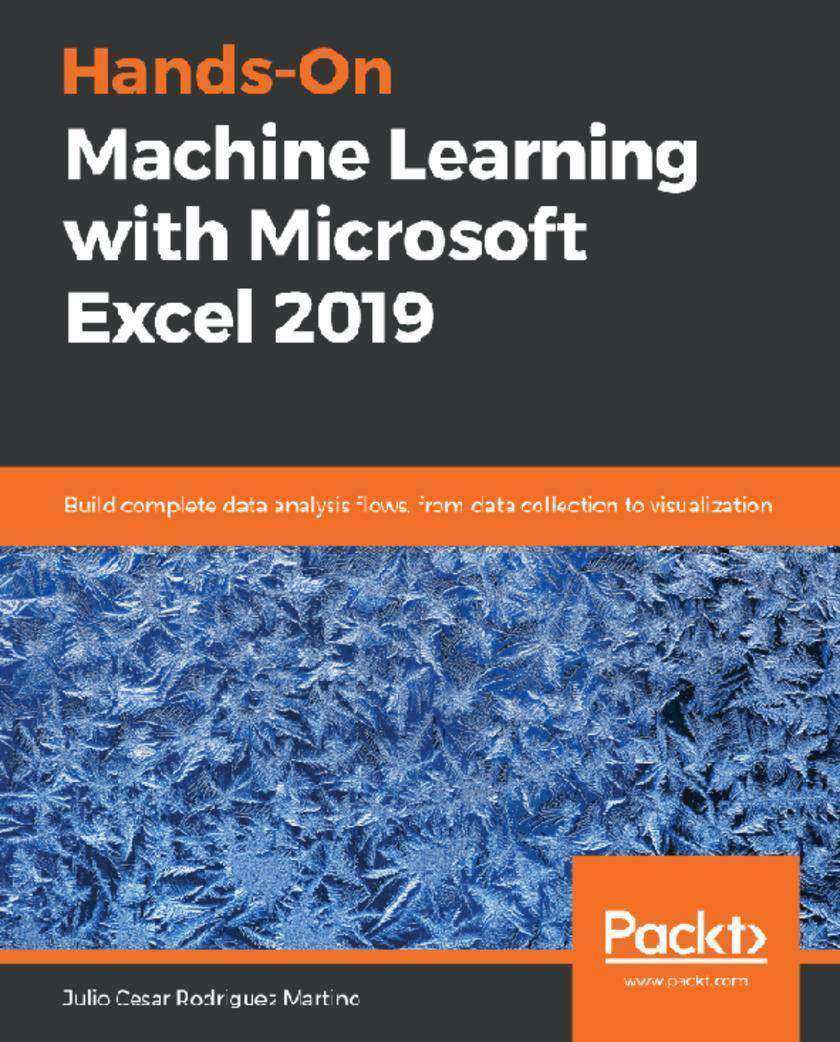
Hands-On Machine Learning with Microsoft Excel 2019
¥70.84
A practical guide to getting the most out of Excel, using it for data preparation, applying machine learning models (including cloud services) and understanding the outcome of the data analysis. Key Features * Use Microsoft's product Excel to build advanced forecasting models using varied examples * Cover range of machine learning tasks such as data mining, data analytics, smart visualization, and more * Derive data-driven techniques using Excel plugins and APIs without much code required Book Description We have made huge progress in teaching computers to perform difficult tasks, especially those that are repetitive and time-consuming for humans. Excel users, of all levels, can feel left behind by this innovation wave. The truth is that a large amount of the work needed to develop and use a machine learning model can be done in Excel. The book starts by giving a general introduction to machine learning, making every concept clear and understandable. Then, it shows every step of a machine learning project, from data collection, reading from different data sources, developing models, and visualizing the results using Excel features and offerings. In every chapter, there are several examples and hands-on exercises that will show the reader how to combine Excel functions, add-ins, and connections to databases and to cloud services to reach the desired goal: building a full data analysis flow. Different machine learning models are shown, tailored to the type of data to be analyzed. At the end of the book, the reader is presented with some advanced use cases using Automated Machine Learning, and artificial neural network, which simplifies the analysis task and represents the future of machine learning. What you will learn * Use Excel to preview and cleanse datasets * Understand correlations between variables and optimize the input to machine learning models * Use and evaluate different machine learning models from Excel * Understand the use of different visualizations * Learn the basic concepts and calculations to understand how artificial neural networks work * Learn how to connect Excel to the Microsoft Azure cloud * Get beyond proof of concepts and build fully functional data analysis flows Who this book is for This book is for data analysis, machine learning enthusiasts, project managers, and someone who doesn't want to code much for performing core tasks of machine learning. Each example will help you perform end-to-end smart analytics. Working knowledge of Excel is required.
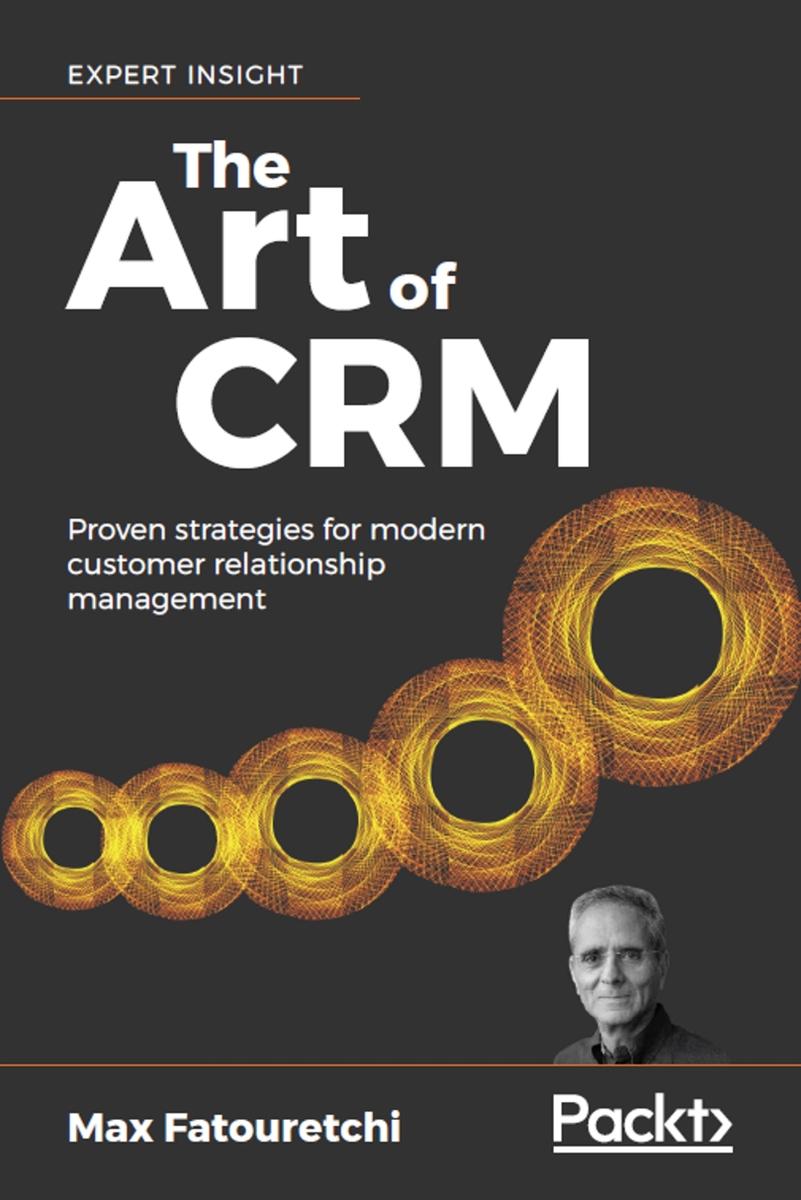
The Art of CRM
¥70.84
This CRM masterclass gives you a proven approach to modern customer relationship management Key Features * Proven techniques to architect CRM systems that perform well, that are built on time and on budget, and that deliver value for many years * Combines technical knowledge and business experience to provide a powerful guide to CRM implementation * Covers modern CRM opportunities and challenges including machine learning, cloud hosting, and GDPR compliance Book Description CRM systems have delivered huge value to organizations. This book shares proven and cutting-edge techniques to increase the power of CRM even further. In The Art of CRM, Max Fatouretchi shares his decades of experience building successful CRM systems that make a real difference to business performance. Through clear processes, actionable advice, and informative case studies, The Art of CRM teaches you to design successful CRM systems for your clients. Fatouretchi, founder of Academy4CRM institute, draws on his experience over 20 years and 200 CRM implementations worldwide. Bringing CRM bang up to date, The Art of CRM shows how to add AI and machine learning, ensure compliance with GDPR, and choose between on-premise, cloud, and hybrid hosting solutions. If you’re looking for an expert guide to real-world CRM implementations, this book is for you. What you will learn * Deliver CRM systems that are on time, on budget, and bring lasting value to organizations * Build CRM that excels at operations, analytics, and collaboration * Gather requirements effectively: identify key pain points, objectives, and functional requirements * Develop customer insight through 360-degree client view and client profiling * Turn customer requirements into a CRM design spec * Architect your CRM platform * Bring machine learning and artificial intelligence into your CRM system * Ensure compliance with GDPR and other critical regulations * Choose between on-premise, cloud, and hybrid hosting solutions Who this book is for CRM practitioners who want to update their work with new, proven techniques and approaches
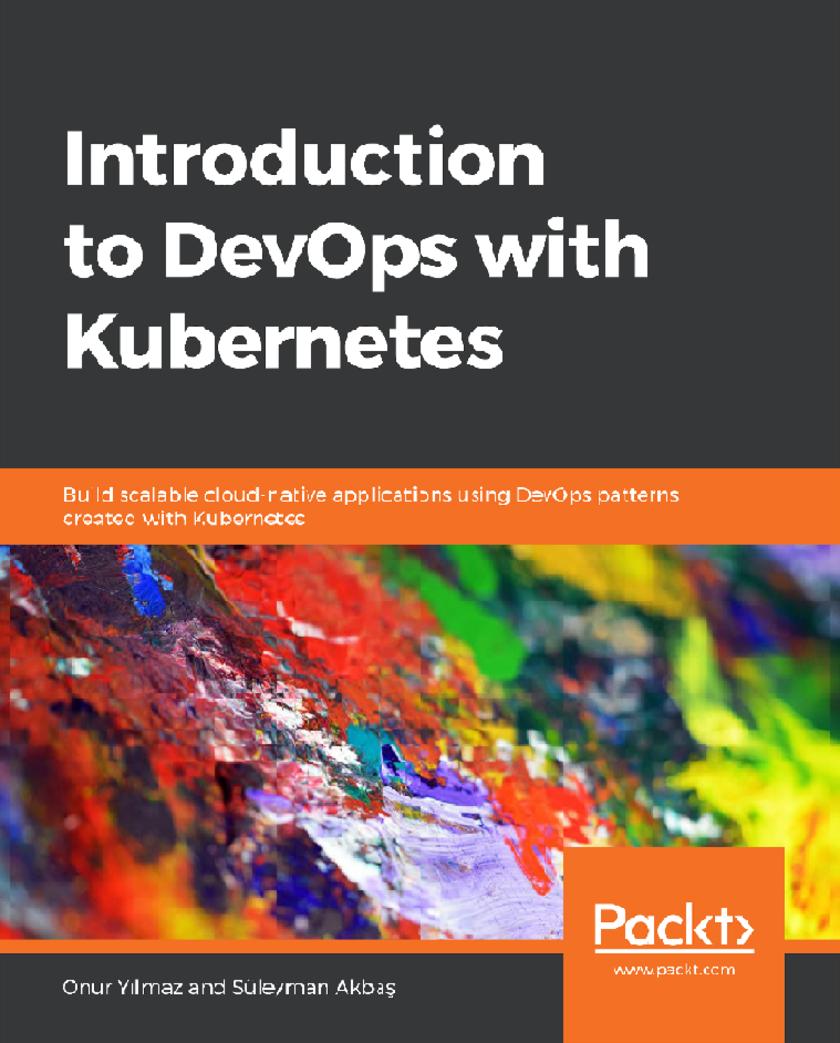
Introduction to DevOps with Kubernetes
¥70.84
Become familiar with Kubernetes and explore techniques to manage your containerized workloads and services Key Features * Learn everything from creating a cluster to monitoring applications in Kubernetes * Understand and develop DevOps primitives using Kubernetes * Use Kubernetes to solve challenging real-life DevOps problems Book Description Kubernetes and DevOps are the two pillars that can keep your business at the top by ensuring high performance of your IT infrastructure. Introduction to DevOps with Kubernetes will help you develop the skills you need to improve your DevOps with the power of Kubernetes. The book begins with an overview of Kubernetes primitives and DevOps concepts. You'll understand how Kubernetes can assist you with overcoming a wide range of real-world operation challenges. You will get to grips with creating and upgrading a cluster, and then learn how to deploy, update, and scale an application on Kubernetes. As you advance through the chapters, you’ll be able to monitor an application by setting up a pod failure alert on Prometheus. The book will also guide you in configuring Alertmanager to send alerts to the Slack channel and trace down a problem on the application using kubectl commands. By the end of this book, you’ll be able to manage the lifecycle of simple to complex applications on Kubernetes with confidence. What you will learn * Create and manage Kubernetes clusters in on-premise systems and cloud * Exercise various DevOps practices using Kubernetes * Explore configuration, secret, and storage management, and exercise these on Kubernetes * Perform different update techniques and apply them on Kubernetes * Use the built-in scaling feature in Kubernetes to scale your applications up and down * Use various troubleshooting techniques and have a monitoring system installed on Kubernetes Who this book is for If you are a developer who wants to learn how to apply DevOps patterns using Kubernetes, then this book is for you. Familiarity with Kubernetes will be useful, but not essential.
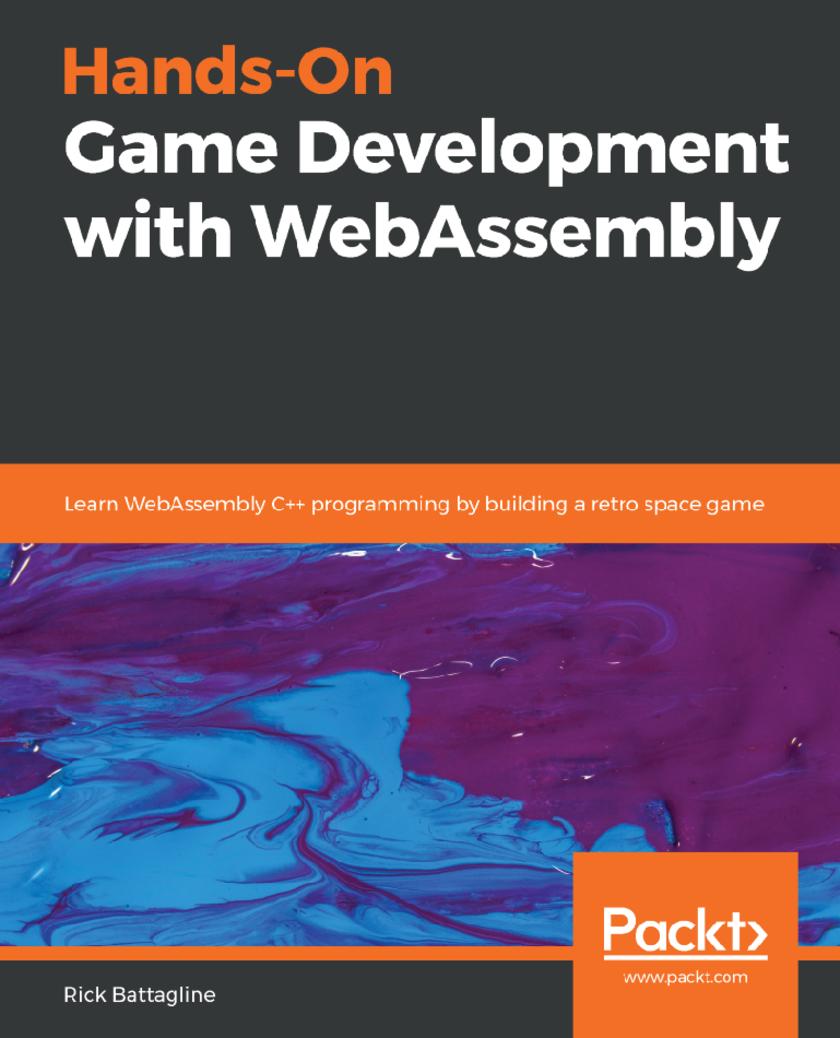
Hands-On Game Development with WebAssembly
¥70.84
Make your WebAssembly journey fun while making a game with it Key Features * Create a WebAssembly game that implements sprites, animations, physics, particle systems, and other game development fundamentals * Get to grips with advanced game mechanics in WebAssembly * Learn to use WebAssembly and WebGL to render to the HTML5 canvas element Book Description Within the next few years, WebAssembly will change the web as we know it. It promises a world where you can write an application for the web in any language, and compile it for native platforms as well as the web. This book is designed to introduce web developers and game developers to the world of WebAssembly by walking through the development of a retro arcade game. You will learn how to build a WebAssembly application using C++, Emscripten, JavaScript, WebGL, SDL, and HTML5. This book covers a lot of ground in both game development and web application development. When creating a game or application that targets WebAssembly, developers need to learn a plethora of skills and tools. This book is a sample platter of those tools and skills. It covers topics including Emscripten, C/C++, WebGL, OpenGL, JavaScript, HTML5, and CSS. The reader will also learn basic techniques for game development, including 2D sprite animation, particle systems, 2D camera design, sound effects, 2D game physics, user interface design, shaders, debugging, and optimization. By the end of the book, you will be able to create simple web games and web applications targeting WebAssembly. What you will learn * Build web applications with near-native performance using WebAssembly * Become familiar with how web applications can be used to create games using HTML5 Canvas, WebGL, and SDL * Become well versed with game development concepts such as sprites, animation, particle systems, AI, physics, camera design, sound effects, and shaders * Deploy C/C++ applications to the browser using WebAssembly and Emscripten * Understand how Emscripten HTML shell templates, JavaScript glue code, and a WebAssembly module interact * Debug and performance tune your WebAssembly application Who this book is for Web developers and game developers interested in creating applications for the web using WebAssembly. Game developers interested in deploying their games to the web Web developers interested in creating applications that are potentially orders of magnitude faster than their existing JavaScript web apps C/C++ developers interested in using their existing skills to deploy applications to the web
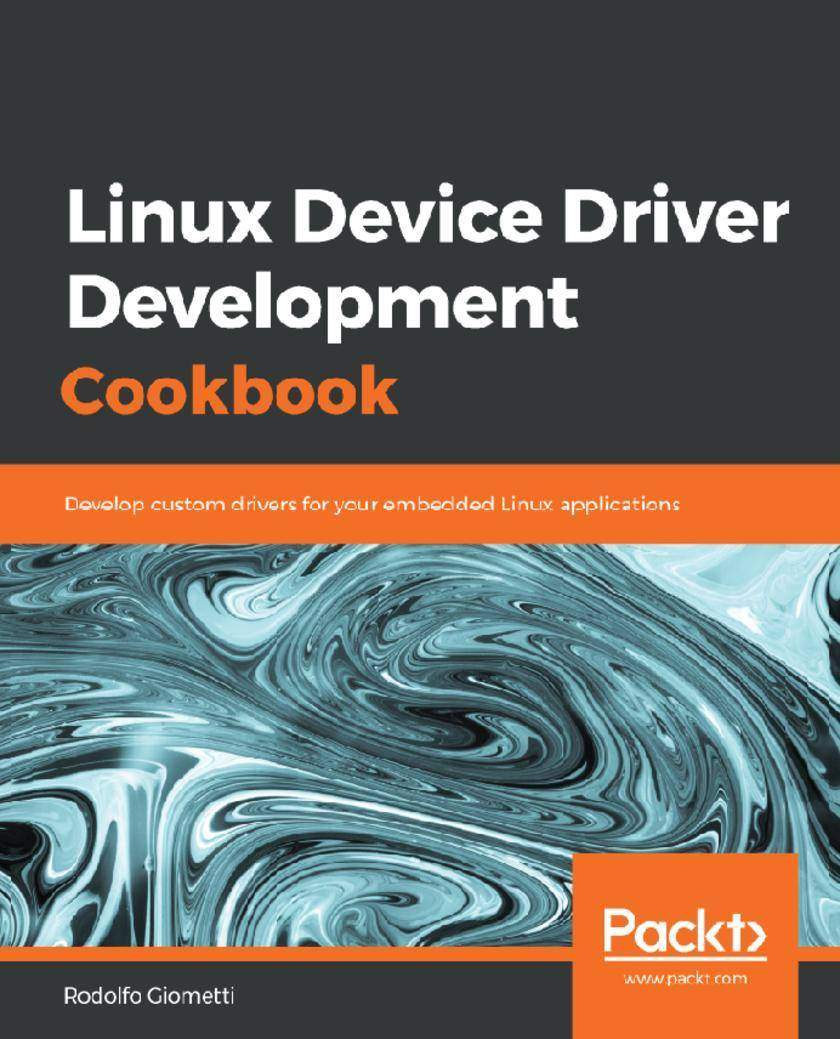
Linux Device Driver Development Cookbook
¥70.84
Over 30 recipes to develop custom drivers for your embedded Linux applications. Key Features * Use Kernel facilities to develop powerful drivers * Via a practical approach, learn core concepts of developing device drivers * Program a custom character device to get access to kernel internals Book Description Linux is a unified kernel that is widely used to develop embedded systems. As Linux has turned out to be one of the most popular operating systems used, the interest in developing proprietary device drivers has also increased. Device drivers play a critical role in how the system performs and ensures that the device works in the manner intended. By offering several examples on the development of character devices and how to use other kernel internals, such as interrupts, kernel timers, and wait queue, as well as how to manage a device tree, you will be able to add proper management for custom peripherals to your embedded system. You will begin by installing the Linux kernel and then configuring it. Once you have installed the system, you will learn to use the different kernel features and the character drivers. You will also cover interrupts in-depth and how you can manage them. Later, you will get into the kernel internals required for developing applications. Next, you will implement advanced character drivers and also become an expert in writing important Linux device drivers. By the end of the book, you will be able to easily write a custom character driver and kernel code as per your requirements. What you will learn * Become familiar with the latest kernel releases (4.19+/5.x) running on the ESPRESSObin devkit, an ARM 64-bit machine * Download, configure, modify, and build kernel sources * Add and remove a device driver or a module from the kernel * Master kernel programming * Understand how to implement character drivers to manage different kinds of computer peripherals * Become well versed with kernel helper functions and objects that can be used to build kernel applications * Acquire a knowledge of in-depth concepts to manage custom hardware with Linux from both the kernel and user space Who this book is for This book will help anyone who wants to develop their own Linux device drivers for embedded systems. Having basic hand-on with Linux operating system and embedded concepts is necessary.
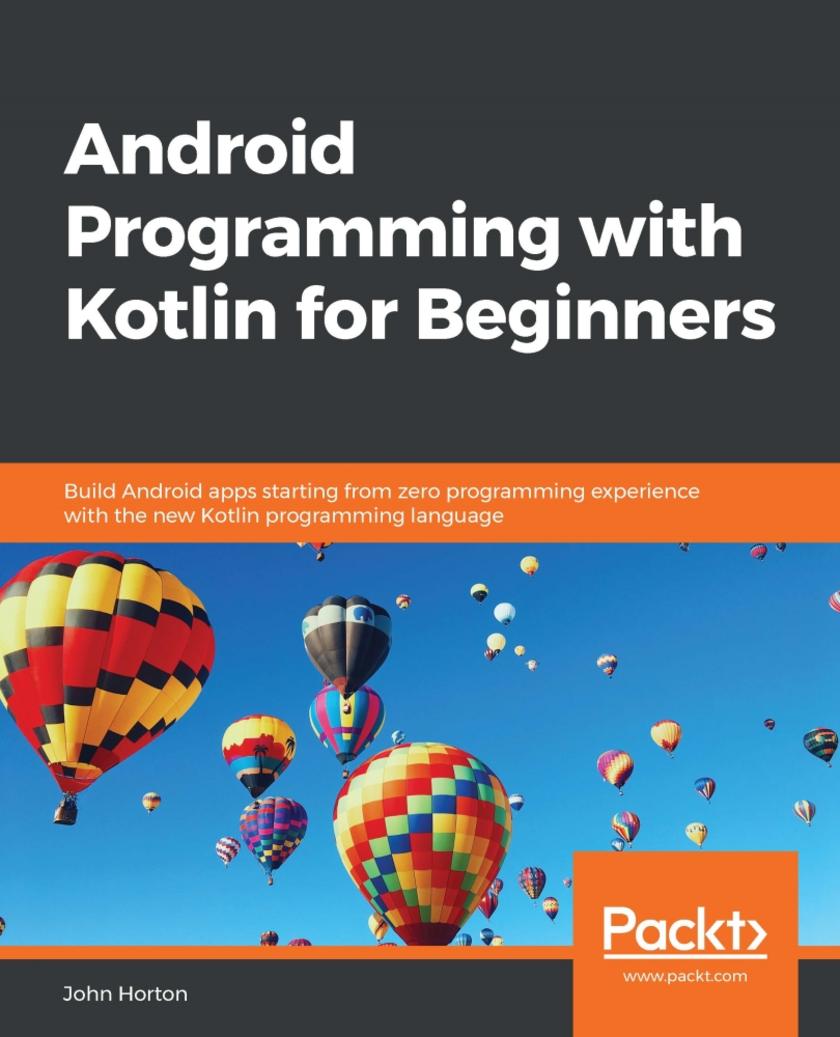
Android Programming with Kotlin for Beginners
¥70.84
Build smart looking Kotlin apps with UI and functionality for the Android platform Key Features * Start your Android programming career, or just have fun publishing apps on Google Play marketplace * The first-principle introduction to Kotlin through Android, to start building easy-to-use apps * Learn by example and build four real-world apps and dozens of mini-apps Book Description Android is the most popular mobile operating system in the world and Kotlin has been declared by Google as a first-class programming language to build Android apps. With the imminent arrival of the most anticipated Android update, Android 10 (Q), this book gets you started building apps compatible with the latest version of Android. It adopts a project-style approach, where we focus on teaching the fundamentals of Android app development and the essentials of Kotlin by building three real-world apps and more than a dozen mini-apps. The book begins by giving you a strong grasp of how Kotlin and Android work together before gradually moving onto exploring the various Android APIs for building stunning apps for Android with ease. You will learn to make your apps more presentable using different layouts. You will dive deep into Kotlin programming concepts such as variables, functions, data structures, Object-Oriented code, and how to connect your Kotlin code to the UI. You will learn to add multilingual text so that your app is accessible to millions of more potential users. You will learn how animation, graphics, and sound effects work and are implemented in your Android app. By the end of the book, you will have sound knowledge about significant Kotlin programming concepts and start building your own fully featured Android apps. What you will learn * Learn how Kotlin and Android work together * Build a graphical drawing app using Object-Oriented Programming (OOP) principles * Build beautiful, practical layouts using ScrollView, RecyclerView, NavigationView, ViewPager and CardView * Write Kotlin code to manage an apps' data using different strategies including JSON and the built-in Android SQLite database * Add user interaction, data captures, sound, and animation to your apps * Implement dialog boxes to capture input from the user * Build a simple database app that sorts and stores the user's data Who this book is for This book is for people who are new to Kotlin, Android and want to develop Android apps.It also acts as a refresher for those who have some experience in programming with Android and Kotlin.
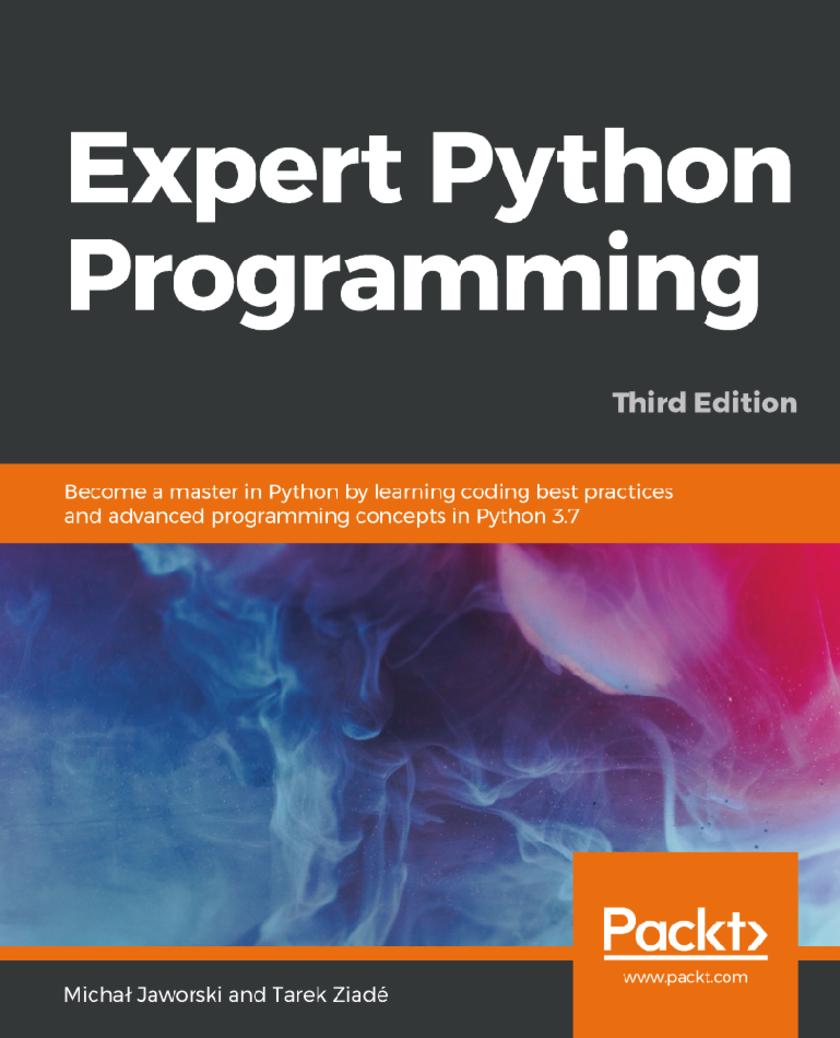
Expert Python Programming
¥70.84
Refine your Python programming skills and build professional grade applications with this comprehensive guide Key Features * Create manageable code that can run in various environments with different sets of dependencies * Implement effective Python data structures and algorithms to write optimized code * Discover the exciting new features of Python 3.7 Book Description Python is a dynamic programming language that's used in a wide range of domains thanks to its simple yet powerful nature. Although writing Python code is easy, making it readable, reusable, and easy to maintain is challenging. Complete with best practices, useful tools, and standards implemented by professional Python developers, the third edition of Expert Python Programming will help you overcome this challenge. The book will start by taking you through the new features in Python 3.7. You'll then learn the advanced components of Python syntax, in addition to understanding how to apply concepts of various programming paradigms, including object-oriented programming, functional programming, and event-driven programming. This book will also guide you through learning the best naming practices, writing your own distributable Python packages, and getting up to speed with automated ways of deploying your software on remote servers. You’ll discover how to create useful Python extensions with C, C++, Cython, and CFFI. Furthermore, studying about code management tools, writing clear documentation, and exploring test-driven development will help you write clean code. By the end of the book, you will have become an expert in writing efficient and maintainable Python code. What you will learn * Explore modern ways of setting up repeatable and consistent development environments * Package Python code effectively for community and production use * Learn modern syntax elements of Python programming such as f-strings, enums, and lambda functions * Demystify metaprogramming in Python with metaclasses * Write concurrent code in Python * Extend Python with code written in different languages * Integrate Python with code written in different languages Who this book is for This book will appeal to you if you’re a programmer looking to take your Python knowledge to the next level by writing efficient code and learning the latest features of version 3.7 and above.
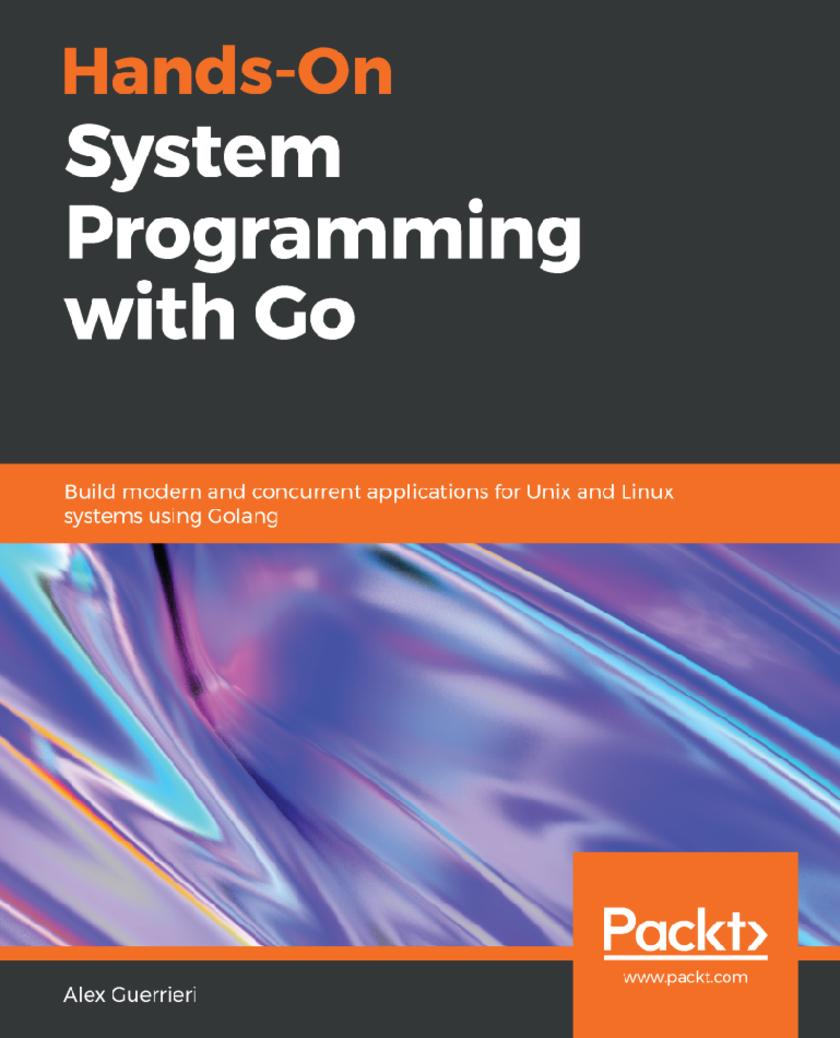
Hands-On System Programming with Go
¥70.84
Explore the fundamentals of systems programming starting from kernel API and filesystem to network programming and process communications Key Features * Learn how to write Unix and Linux system code in Golang v1.12 * Perform inter-process communication using pipes, message queues, shared memory, and semaphores * Explore modern Go features such as goroutines and channels that facilitate systems programming Book Description System software and applications were largely created using low-level languages such as C or C++. Go is a modern language that combines simplicity, concurrency, and performance, making it a good alternative for building system applications for Linux and macOS. This Go book introduces Unix and systems programming to help you understand the components the OS has to offer, ranging from the kernel API to the filesystem, and familiarize yourself with Go and its specifications. You'll also learn how to optimize input and output operations with files and streams of data, which are useful tools in building pseudo terminal applications. You'll gain insights into how processes communicate with each other, and learn about processes and daemon control using signals, pipes, and exit codes. This book will also enable you to understand how to use network communication using various protocols, including TCP and HTTP. As you advance, you'll focus on Go's best feature-concurrency helping you handle communication with channels and goroutines, other concurrency tools to synchronize shared resources, and the context package to write elegant applications. By the end of this book, you will have learned how to build concurrent system applications using Go What you will learn * Explore concepts of system programming using Go and concurrency * Gain insights into Golang's internals, memory models and allocation * Familiarize yourself with the filesystem and IO streams in general * Handle and control processes and daemons' lifetime via signals and pipes * Communicate with other applications effectively using a network * Use various encoding formats to serialize complex data structures * Become well-versed in concurrency with channels, goroutines, and sync * Use concurrency patterns to build robust and performant system applications Who this book is for If you are a developer who wants to learn system programming with Go, this book is for you. Although no knowledge of Unix and Linux system programming is necessary, intermediate knowledge of Go will help you understand the concepts covered in the book
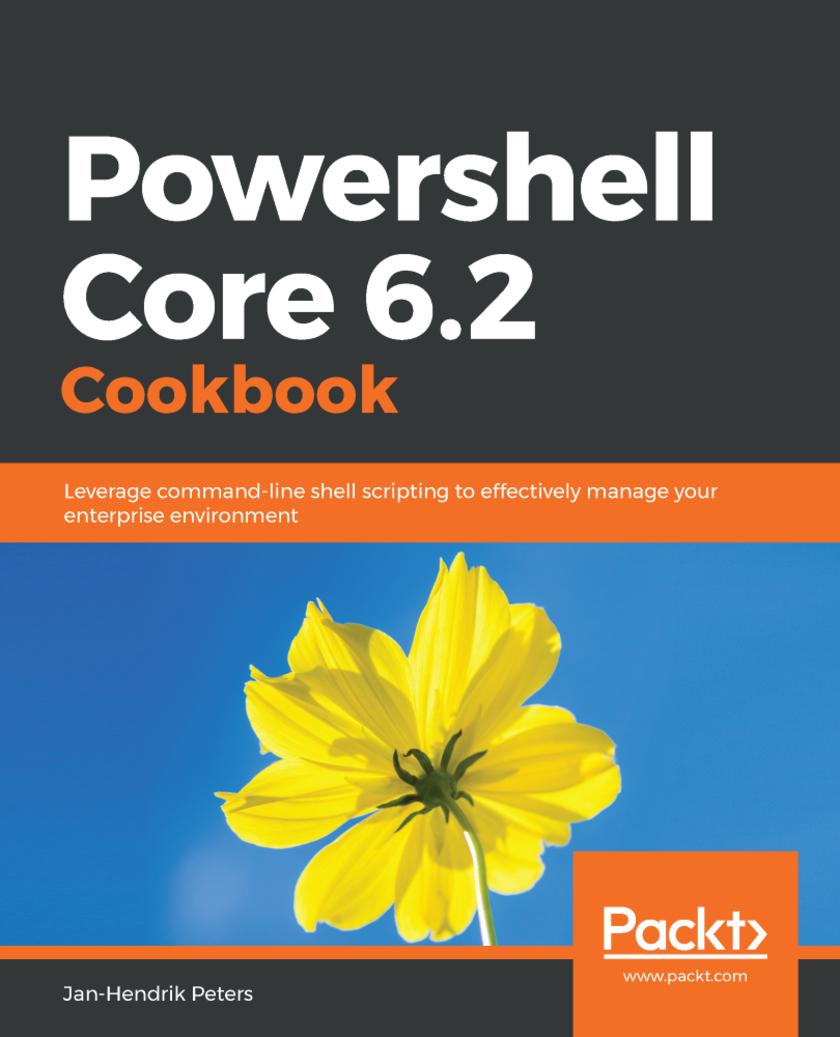
Powershell Core 6.2 Cookbook
¥70.84
Make use of hands-on recipes for many tasks that are typically encountered in both the on-premises as well as the cloud world. Key Features * A recipe-based guide to help you build effective administrative solutions * Gain hands-on experience with the newly added features of PowerShell Core * Manage critical business environments with professional scripting practices Book Description This book will follow a recipe-based approach and start off with an introduction to the fundamentals of PowerShell, and explaining how to install and run it through simple examples. Next, you will learn how to use PowerShell to access and manipulate data and how to work with different streams as well. You will also explore the object model which will help with regard to PowerShell function deployment. Going forward, you will get familiar with the pipeline in its different use cases. The next set of chapters will deal with the different ways of accessing data in PowerShell. You will also learn to automate various tasks in Windows and Linux using PowerShell Core, as well as explore Windows Server. Later, you will be introduced to Remoting in PowerShell Core and Just Enough Administration concept. The last set of chapters will help you understand the management of a private and public cloud with PowerShell Core. You will also learn how to access web services and explore the high-performance scripting methods. By the end of this book, you will gain the skills to manage complex tasks effectively along with increasing the performance of your environment. What you will learn * Leverage cross-platform interaction with systems * Make use of the PowerShell recipes for frequent tasks * Get a better understanding of the inner workings of PowerShell * Understand the compatibility of built-in Windows modules with PowerShell Core * Learn best practices associated with PowerShell scripting * Avoid common pitfalls and mistakes Who this book is for This book will be for windows administrators who want to enhance their PowerShell scripting skills to the next level. System administrators wanting to automate common to complex tasks with PowerShell scripts would benefit from this book. Prior understanding on PowerShell would be necessary.




 购物车
购物车 个人中心
个人中心



